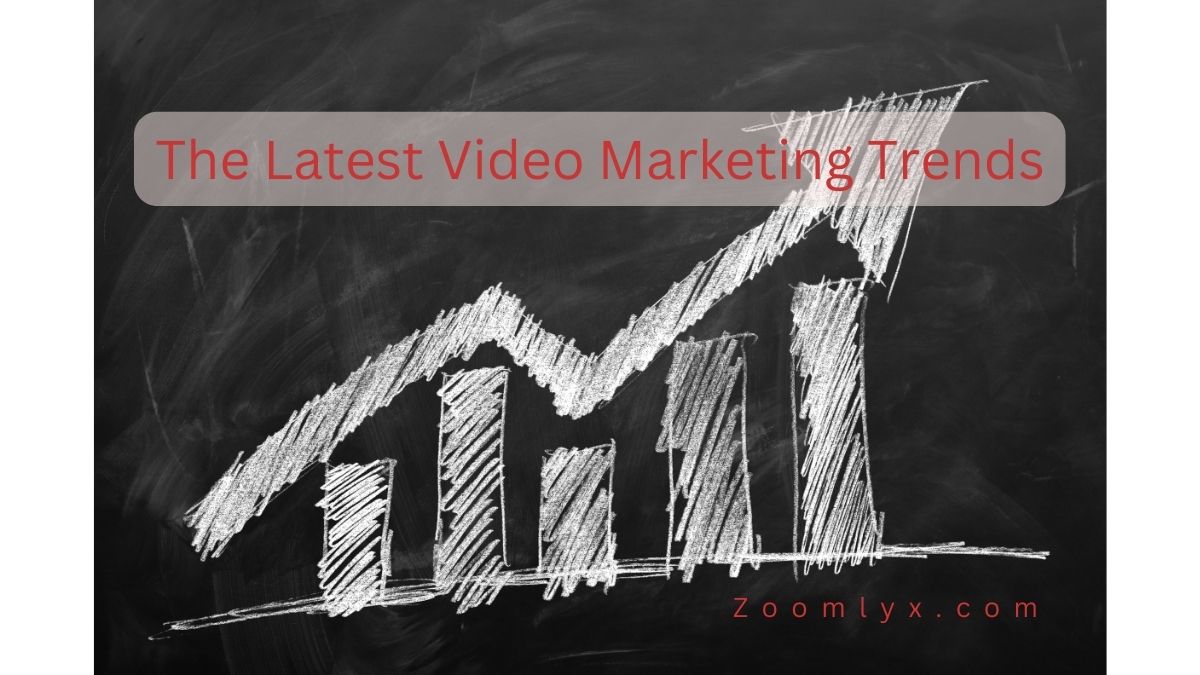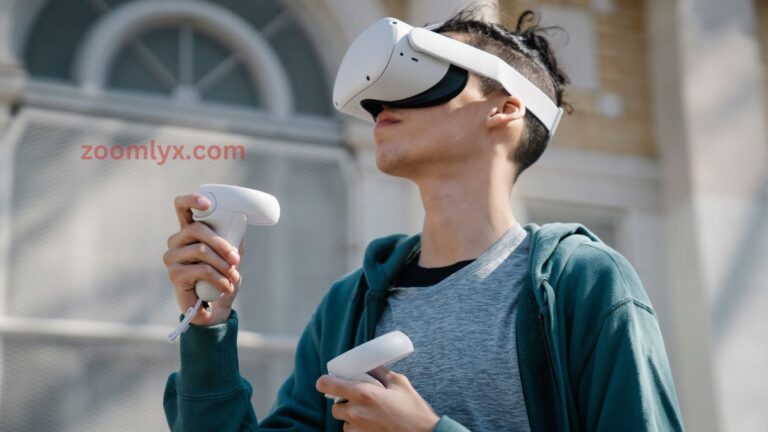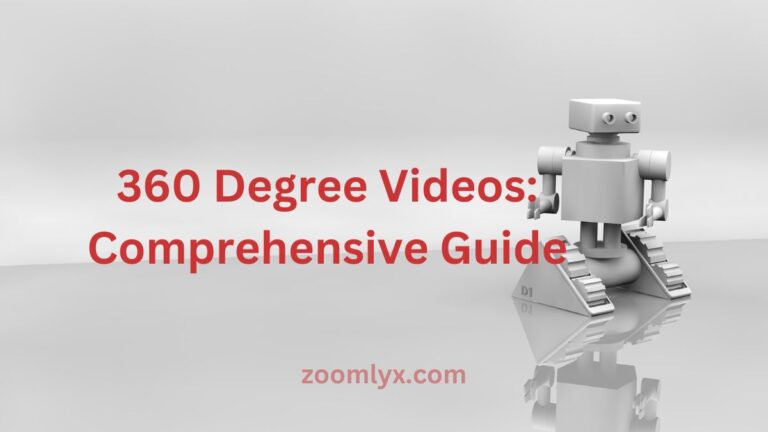The Latest Video Marketing Trends: Navigating 2023 and Beyond
“Caught Yourself Rolling Your Eyes at Another Video Marketing Trends? I Did Too.”
We’ve all been there. Just when you think you’ve got a grip on this whole video marketing game, the digital landscape playfully shifts beneath your feet.
According to a HubSpot report, 85% of businesses now use video as a marketing tool. That’s a hefty jump from a mere 61% in 2016!
A new trend bursts onto the scene, and suddenly, your meticulously curated content feels…well, a tad outdated. Remember when Facebook Live became a thing? It reached 2 billion views in just 2 years after it was launched – Bloggingwizard.com.
Frustrating, isn’t it?
But here’s the raw truth: the digital realm is a wild, evolving beast, and video marketing is its most unpredictable cub. Just consider the rise of TikTok. In just a few years, it’s rocketed to over 1 billion monthly active users, changing the game for short-form video content.
Whether you’re a seasoned marketer or a newbie trying to make a mark, the challenge remains: how do we stay ahead without getting overwhelmed?
Enter 2023. A year that’s promising to be a rollercoaster for video marketing aficionados.
From TikTok’s ephemeral snippets to immersive 360-degree experiences—like those championed by Samsung VR—that feel like stepping into another universe, the boundaries are stretching, rules are being rewritten, and creativity? It’s in overdrive.
But don’t sweat it. We’re in this together. Let’s navigate the wild terrains of 2023’s video marketing landscape and ensure we’re not just keeping up, but setting the pace.
Video Marketing Trends: The Humble Beginnings
Flashback five years ago, and the video marketing trends were vastly different. Remember when YouTube was primarily a place for cat videos and budding vloggers? Well, it’s undergone quite the transformation. As of 2022, YouTube users were uploading 500 hours of video every minute!
Platform Evolution
Platforms we consider ‘classic’ now were only flexing their muscle, learning to dictate how businesses approach consumers. For instance, Facebook introduced auto-playing videos in News Feeds around 2013, changing the ad game forever.
Consumer Shifts: A Tale Told in Numbers
It’s not just about the platforms; it’s about us, the viewers. Our preferences and behaviors have taken some unexpected turns.
Did you know that 54% of consumers in 2019 wanted to see more video content from a brand or business they support, as reported by HubSpot?
Currently, an average person watches 1020 minutes of online videos per week, according to DashApp.
“Seth Godin, a titan in the marketing world: “Marketing is no longer about the stuff that you make, but about the stories you tell.” And what better medium for storytelling than video?”
The Power of Video: Not Just Hype!
Raise your hand if you’ve heard someone proclaim, “Video is king!” Now, as much as that sounds like every marketing cliche ever, it holds water. Here’s why:
- A study by Forrester Research suggests that one minute of video is worth 1.8 million words. Talk about getting bang for your buck!
- Moreover, according to Insivia, viewers retain 95% of a message when they watch it in a video, compared to a measly 10% when reading it in text.
Video Marketing’s Surge: By the Numbers
With such impressive stats, it’s little wonder that brands are pulling out all the stops to harness video’s potential. Let’s look at some figures that paint the bigger picture:
- As of 2020, 92% of marketers said that video was an important part of their marketing strategy, up from 78% in 2015, based on a report by HubSpot.
- On the consumption side, the same report revealed that 78% of people watch online videos every week, with 55% viewing them daily.
The ROI of Video Marketing: Yes, It’s Significant
If you’re in the world of marketing, ROI isn’t just a metric; it’s the metric. And video marketing trends has some impressive numbers to flaunt. According to a survey by OptinMonster, 92% of video marketers reported that video gives them a positive ROI.
“Gary Vaynerchuk, a renowned marketing guru, often emphasizes the importance of content context. He’s been quoted saying, “Content is king, but context is God.” With platforms evolving and user preferences shifting, understanding the context of where and how to use video becomes pivotal.”
Emerging Video Marketing Trends
Alright, let’s dive into the good stuff:
Short-Form Videos
A Blast from the Past
Let’s take a little stroll down memory lane. Remember Vine? Those quick, 6-second loops were just the tip of the iceberg. They gave us a taste of the future, a teaser of what was to come in the realm of short-form content.
TikTok: The New Titan on the Block
Fast forward to today, and platforms like TikTok have truly stolen the spotlight. But it isn’t just about catchy dances or lip-sync challenges. This platform has revolutionized how brands and creators craft concise, impactful content.
To provide a perspective on its dominance, as of 2022, TikTok crossed 1 billion users, surpassing legacy platforms like Twitter and Snapchat.
Brands have jumped on board too, with companies like Nike and Gucci using the platform for snappy, engaging campaigns that resonate with a younger audience.
Why the Hype?
You might wonder, why has short-form content taken the digital world by storm? The answer is simple: our attention spans are dwindling.
A study by Support Care ABA found that the average human attention span has shrunk from 12 seconds in 2000 to just 8 seconds today. That’s even shorter than a goldfish’s!
These bite-sized videos cater perfectly to our “quick consumption” nature, delivering memorable messages in mere moments.
“Brian Solis, a leading digital analyst, once said, “Welcome to a new era of marketing and service in which your brand is defined by those who experience it.” In the age of short-form videos, where users swiftly decide to engage or scroll past, every second counts, and every frame becomes part of your brand’s story.”
Live Streaming
The Real-Time Revolution
There’s something undeniably electric about live streaming. The thrill of real-time engagement, the unpredictability of live content, and the immediate feedback loop—it’s all so… alive.
Platform Pioneers
Platforms like Twitch and YouTube Live have been at the forefront, pushing the boundaries of live digital interaction.
Twitch, initially a platform for gamers, recorded an impressive 6.9 million unique broadcasters as of January 2021. And its appeal isn’t just limited to gaming anymore.
YouTube Live, on the other hand, has brought everything from music concerts to space launches right to our screens.
Why Go Live?
The rise of live streaming is more than just a trend; it’s indicative of a broader shift in user behavior.
According to a joint survey by Livestream and New York Magazine, 82% of viewers prefer live stream content to social media posts. That’s saying something in today’s scroll-happy world.
Brands Riding the Wave
Brands haven’t been slow to catch on. They’re leveraging live streaming to offer behind-the-scenes peeks, conduct Q&A sessions, launch products, and more. From fashion brands showcasing runway events to tech giants unveiling their latest gadgets, live streaming has become the go-to for real-time brand storytelling.
“As Mari Smith, often touted as the ‘Queen of Facebook’, puts it: “Live streaming is about connecting and interacting with your audience in real time. It breaks down barriers and creates a connection that transcends traditional marketing limitations.” It’s this very essence of genuine connection that’s driving the meteoric rise of live streams.”
Video in Email Marketing
A Match Made in Marketing Heaven
There’s something about a video thumbnail in an email. It’s like an inviting window, nudging you to peek in. When text meets video in the inbox, magic happens.
The Stats Speak Volumes
If numbers could talk, they’d tell a compelling story about video’s power to revitalize emails:
Emails that include videos have shown to increase click-through rates (CTR) by over 300% according to HubSpot.
Moreover, an Animoto survey revealed that 50% of consumers said they’ve shared a brand’s video on their own social media account. Imagine the amplification potential when such content is embedded in emails!
Brands Nailing the Combo
Think of how fashion brands send out teaser videos of their upcoming collections, or how software companies roll out tutorial snippets right in the inbox. These aren’t just emails; they’re experiences.
According to Wordstream, adding a video to your email marketing will increase your CTR by 300%.
The Personal Touch
Beyond the numbers, videos in emails bring a personal touch. They bridge the gap between brand and consumer, making interactions more genuine. It’s less about selling and more about storytelling.
“Ann Handley, a top marketing thought leader, emphasizes, “Our job is not to create content. Our job is to change the world of the people who consume it.” With video-infused emails, marketers have the chance to do just that, one click at a time.”
360-Degree and VR Videos
The Next Frontier in Immersion
Video isn’t just about watching anymore; it’s about immersing oneself. Step into the world of 360-degree videos and virtual reality (VR), where audiences don’t just view content—they live it.
A Quick Dive into the Numbers
The stats showcase a rising trend in the adoption and success of 360-degree and VR content:
Global VR video revenue saw a jump to $1.4 billion in 2020 and is projected to climb even higher.
According to a report by TomislavHorvat, 360-degree video outperforms standard video across different metrics, especially in driving purchase intent.
Brands Pioneering the Way
Several industries have started leveraging the full potential of this immersive medium:
- Real estate companies now offer virtual home tours, allowing potential buyers to explore properties without ever setting foot in them.
- Travel companies provide virtual tours of exotic destinations, giving a teaser of what vacationers can expect.
The Underlying Appeal
Why this sudden surge in interest? VR and 360-degree videos offer a level of engagement unparalleled by traditional video formats. They’re not just presenting a message; they’re crafting an experience.
“Mark Zuckerberg, during one of Facebook’s Oculus events, mentioned, “Virtual reality was once the dream of science fiction. But the internet was also once a dream, and so were computers and smartphones.” This serves as a reminder that VR and 360-degree videos are not fleeting trends but a new norm in content creation and consumption.”
Shoppable Videos
The Future of E-Commerce
Ever watched a video and thought, “I need that in my life”? Enter shoppable videos—a seamless blend of content and commerce.
Click, Watch, Shop
Shoppable videos are pretty much what they sound like: viewers can click items within the video and be directed to a purchasing platform. It’s e-commerce, but with a dynamic twist.
By the Numbers: The Rise of Shoppable Content
Statistics reveal the growing traction of this format:
- According to a study by Wyzowl, 23% of marketers have started using shoppable video, with another 23% planning to do so in 2021.
- A survey by Channelsight.com found that 85% of consumers have made a direct purchase via shoppable video.
Brands at the Forefront
Forward-thinking brands have harnessed the dual power of visual allure and instant gratification:
- For instance, ASOS regularly incorporates shoppable content into their promotional videos, letting viewers snag their favorite styles on-the-go.
- Luxury brands aren’t left behind, with names like Burberry creating captivating fashion films that let viewers shop straight from the runway.
Why It Works
The beauty of shoppable videos lies in reducing friction. Instead of a multi-step journey from seeing a product in a video to searching for it online, it’s all just a click away.
“Blake Nordstrom, co-president of Nordstrom Inc., has emphasized, “It’s not just about transactional e-commerce, it’s how we take the best of [digital capabilities] to enhance the customer experience.” Shoppable videos, in essence, embody this very philosophy—melding content and commerce for a seamless consumer experience.”
Interactive Videos
Beyond Passive Viewing
Gone are the days when viewers were mere spectators. With interactive videos, they’re in the director’s chair, choosing their own narrative and shaping the outcome.
The Dynamics of Interaction
Interactive video allows for user-driven decisions, be it choosing a storyline, answering quizzes, or exploring more about a showcased product. It’s storytelling, gamified.
Interactive Video by the Numbers
The embrace of interactive videos isn’t just a gimmick; the metrics prove their effectiveness:
- According to Marketsplash, a leading interactive video platform, interactive content can boost traffic by up to 77%.
Brands Taking the Interactive Plunge
Major brands have dabbled in this medium, witnessing significant success:
- For instance, Netflix’s Black Mirror: Bandersnatch is an interactive film, allowing viewers to make choices that dictate the storyline.
- Companies like Deloitte have used interactive videos for training and recruitment purposes, adding a layer of engagement to often mundane processes.
The Immersive Appeal
Interactive videos engage users on a deeper level, turning passive consumption into active participation. The immersive nature not only retains attention but can also drive stronger recall and brand association.
“As Philip Lelyveld, the VR/AR Program Manager at USC Entertainment Technology Center, puts it, “The most exciting storytelling is interactive, where the viewer gets to play an active role.” Indeed, with interactive videos, audiences aren’t just absorbing content; they’re living it.”
Video SEO
Why It’s More Than Just Uploading
Producing a fantastic video is only half the battle. The next step? Ensuring it gets seen. That’s where the magic of Video SEO (Search Engine Optimization) comes into play.
The Vital Role of SEO in Video
It’s simple. Even the most captivating video won’t garner views if it’s buried under the vast ocean of online content. Effective Video SEO ensures that your content rises to the surface, catching the viewer’s eye.
Digging into the Data
The significance of video SEO isn’t just marketing jargon; the numbers echo its impact:
According to Backlinko, YouTube videos are a whopping 53 times more likely to show up on the first page of Google’s search results compared to standard web pages.
In addition, Biteable.com found that a website with video content is 53 times more likely to reach the first page of Google.
Keys to Effective Video SEO
Several crucial components can boost your video’s SEO:
- Keywords: Just like with traditional SEO, targeted keywords in your video titles, descriptions, and tags can work wonders.
- Engagement Metrics: High retention rates, likes, shares, and comments tell search engines that your content is valuable.
- Video Transcripts: Adding a transcript not only aids accessibility but also provides search engines with more text to index.
Brands Doing It Right
Companies like GoPro have mastered the art of Video SEO. A simple search for action cameras on Google often brings up GoPro videos, indicating their prowess in optimizing video content for search.
“Rand Fishkin, founder of Moz, once said, “Good SEO work only gets better over time.” This is especially true for videos. As algorithms evolve and competition heightens, the need for strategic video SEO becomes even more critical.”
Platforms Shaping the Trends
A quick spotlight on where all the action’s happening:
TikTok: The Social Media Sensation
An Unprecedented Rise
In the realm of social media, few platforms have skyrocketed to fame quite like TikTok. What started as a modest lip-syncing app has now become a global phenomenon.
By the Numbers
TikTok’s growth and user engagement stats are simply staggering:
- As of 2022, TikTok surpassed 1 billion monthly active users, competing with long-standing giants like Facebook and Instagram.
- TikTok users spend an average of 52 minutes per day on the platform, showcasing its addictive nature.
Diverse Content Playground
While often associated with dance challenges and quirky trends, TikTok’s range is vast:
From educational content, known as ‘#EduTok’, to small businesses showcasing products, the platform is a melting pot of creativity.
Brands like NBA and Washington Post have embraced TikTok, curating content that resonates with the platform’s younger demographic.
The Algorithm Magic
One of TikTok’s distinguishing factors is its algorithm. Unlike other platforms where content from friends or followed accounts is prioritized, TikTok’s “For You Page” (FYP) curates a personalized stream of videos based on user interactions, making content virality more accessible.
“Gary Vaynerchuk, a renowned digital marketing expert, has often emphasized TikTok’s potential. He says, “TikTok’s content is the culture,” highlighting how the platform doesn’t just follow trends—it sets them.”
YouTube: The Video Behemoth
From Humble Beginnings
It’s hard to remember a time before YouTube. Launched in 2005, this platform has transformed from a simple video-sharing website to the go-to hub for all things video.
YouTube in Numbers
The statistics paint a clear picture of YouTube’s dominance:
According to The Social Shepherd, YouTube has over 2 billion logged-in monthly users.
People watch over 1 billion hours of YouTube videos a day, more than Netflix and Facebook video combined.
Diverse Video Landscape
YouTube’s content landscape is incredibly varied:
Whether it’s vlogs, tutorials, music videos, or independent films, the platform caters to a vast range of tastes and preferences.
Channels like T-Series for music and 5-Minute Crafts for DIY projects exemplify the diversity of popular content.
Monetization and Opportunities
YouTube isn’t just for content consumption. For many, it’s a livelihood:
The platform has paid out over $30 billion to creators, artists, and media companies in the last three years.
It has also given rise to a new class of celebrities. Creators like PewDiePie and MrBeast have built massive followings, rivaling traditional media stars.
“Robert Kyncl, YouTube’s Chief Business Officer, once remarked, “YouTube is not a video platform, but a global community of passionate people.” It’s this sense of community and connection that’s at the heart of YouTube’s success.”
Instagram & IGTV: A Visual Odyssey
The Insta Evolution
From square photos with vintage filters to the dynamism of Stories and IGTV, Instagram’s journey has been nothing short of transformative.
Capturing Moments and Metrics
Instagram’s impact is not just anecdotal; the numbers are astounding:
As of 2021, Instagram boasts over 1 billion active monthly users.
More than 500 million users engage with Instagram Stories every day.
IGTV: Long-Form Meets Social
IGTV, Instagram’s answer to longer video formats, offers a more in-depth content experience:
Brands like National Geographic have seamlessly integrated IGTV into their content strategy, sharing longer exploratory videos that dive deeper than their regular posts.
Unlike traditional platforms, IGTV videos play vertically, aligning with natural phone ergonomics.
Marketing Magic on the ‘Gram
Businesses have found fertile ground on Instagram:
90% of people on Instagram follow a business, making it a potent platform for brands to connect with their audiences.
Features like shoppable posts have blurred the lines between social media and e-commerce.
“Later’s Taylor Loren points out, “Instagram is no longer just a photo-sharing app; it’s a holistic business platform.” Indeed, with its diverse features and vast user base, Instagram offers brands and creators unparalleled opportunities for connection and commerce.”
LinkedIn Video: Business Networking Gets Visual
Not Just Resumes Anymore
When you think of LinkedIn, job hunting and networking might come to mind. But the platform has evolved, emerging as a powerful space for video content tailored to professionals.
The Power of Video on LinkedIn
The shift to video on LinkedIn isn’t just a trend; it’s backed by compelling data:
Video content is shared 20x more often than other types of content on LinkedIn.
According to LinkedIn, live video garners 24x more engagement compared to standard video content.
Content That Resonates
On LinkedIn, video content isn’t just about entertainment; it’s about value:
- Thought leadership videos, webinar snippets, and industry insights tend to garner significant traction.
- Companies like HubSpot have effectively used LinkedIn video to offer bite-sized marketing tips and tricks.
B2B Marketing’s Best Friend
For B2B marketers, LinkedIn Video offers a unique opportunity:
80% of B2B leads from social media come from LinkedIn, and the introduction of video only amplifies this potential.
“Marketing expert, Neil Patel, once observed, “LinkedIn isn’t just for professional networking; it’s a place where businesses can drive meaningful engagement.” With the added layer of video, the platform provides businesses an avenue to tell their stories more dynamically and engagingly.”
Emerging Platforms: The New Kids on the Block
The Constantly Evolving Video Landscape
Just when you thought you’d mastered all there is to video marketing, along comes a fresh wave of platforms, redefining the game. These newcomers are not just “another app” but potential game-changers in the digital video space.
Platforms Making Waves
A few platforms have started carving niches for themselves:
- Byte: Heralded as the successor to Vine, Byte offers 6-second looping videos, rekindling the short-form video spirit Vine was loved for.
- Clash: Founded by former Vine star Dom Hofmann, Clash is designed for creators who want to make their passion their profession.
Why These Platforms Matter
The rise of these platforms underscores a broader trend:
Users are increasingly seeking platforms that value community and content over ads and algorithms. A study from The Harris Poll showed that 60% of Gen Z prefers platforms where they can express themselves genuinely.
Brands and the New Frontier
Several brands are already dipping their toes into these waters. Companies keen on targeting younger demographics are experimenting with campaigns on these platforms, recognizing the potential of early adoption.
“Gary Vaynerchuk, always one to have an eye on emerging trends, has remarked, “If you’re not testing the new platforms, you’re leaving immense opportunity on the table.” The message is clear: innovation in video marketing isn’t just about content but also about embracing new platforms.”
Challenges and Concerns in Video Marketing
Facing the Reality of Video Production
While video marketing is undeniably powerful, it’s not without its challenges. Brands need to acknowledge and navigate these hurdles to harness video’s full potential.
Content Saturation
With everyone jumping on the video bandwagon, the digital space is crowded:
According to a report by HubSpot, 85% of businesses use video as a marketing tool, which means standing out is harder than ever.
The Quest for Authenticity
Today’s discerning audiences can spot inauthentic content a mile away:
A study by Stackla reveals that 90% of consumers say authenticity is important, yet 51% believe less than half of brands create authentic content.
Budgetary Constraints
Quality video production can be expensive:
Equipment, editing software, and skilled personnel – the costs add up. Smaller brands especially grapple with stretching their budgets to produce competitive content.
Privacy and Ethical Concerns
In the era of data breaches and heightened privacy awareness:
Brands have to be cautious about how they gather and use viewer data. GDPR and other data protection regulations have set strict guidelines that marketers must adhere to.
Nailing the Right Platform
It’s not just about creating content, but also about placing it right:
A video that thrives on TikTok might not see the same engagement on LinkedIn. Thus, understanding platform demographics and dynamics is crucial.
“As digital marketing expert, Ann Handley, wisely puts it, “Video storytelling is not about tools but understanding your audience.” While the challenges in video marketing are real, brands that prioritize their audience and stay authentic often navigate these hurdles successfully.”
Best Practices for 2023 and Beyond
Adapting to the Ever-Evolving Video Landscape
Video marketing trends aren’t static. To remain effective and engaging, brands must keep up with the times and embrace evolving best practices.
Authenticity Above All
People crave realness:
According to a Sprout Social survey, 70% of consumers believe it’s important for brands to take a stand on social and political issues. This underlines the demand for authenticity and genuine connection in content.
Diversify Your Video Formats
One size doesn’t fit all!
Use live streams for real-time engagement, tutorials for education, testimonials for building trust, and behind-the-scenes glimpses to humanize your brand.
Optimize for Search
If they can’t find it, they can’t watch it.
Remember to use relevant keywords, engaging thumbnails, and accurate transcriptions. A study from Backlinko found that videos optimized with keywords get 147% more views.
Prioritize Mobile Optimization
It’s a mobile-first world!
A report by Statista predicts that by 2025, 72.6% of internet users will access the web solely via their smartphones.
Interactivity is Key
Engage your audience actively.
Polls, Q&As, and clickable links can make your videos more engaging and interactive.
Measure, Reflect, and Refine
What gets measured gets managed.
Use analytics tools to gauge the success of your campaigns. As Peter Drucker, the management consultant, remarked, “If you can’t measure it, you can’t improve it.”
Drawing the Curtains on a Visual Revolution
So, here you are.
You’ve taken a deep dive into the world of video marketing as we navigate the uncharted waters of 2023 and beyond. Exciting, isn’t it?
But it’s also overwhelming.
You might be wondering if you can keep up, if you’re creative enough, or if you have the resources to pull off these video strategies.
Guess what?
You’re not alone in those feelings.
The world of video is vast, but remember, every Spielberg started with a single shot.
Your brand’s story is worth telling, and there’s an audience out there waiting to hear it.
Let this guide be your North Star.
Embrace the trends, understand the challenges, and apply the best practices.
And above all…
Keep your audience at the heart of your strategy.
They’re the reason we’re all here, after all.
So, lights, camera, action!
The stage is yours, and the world is ready for your story.






